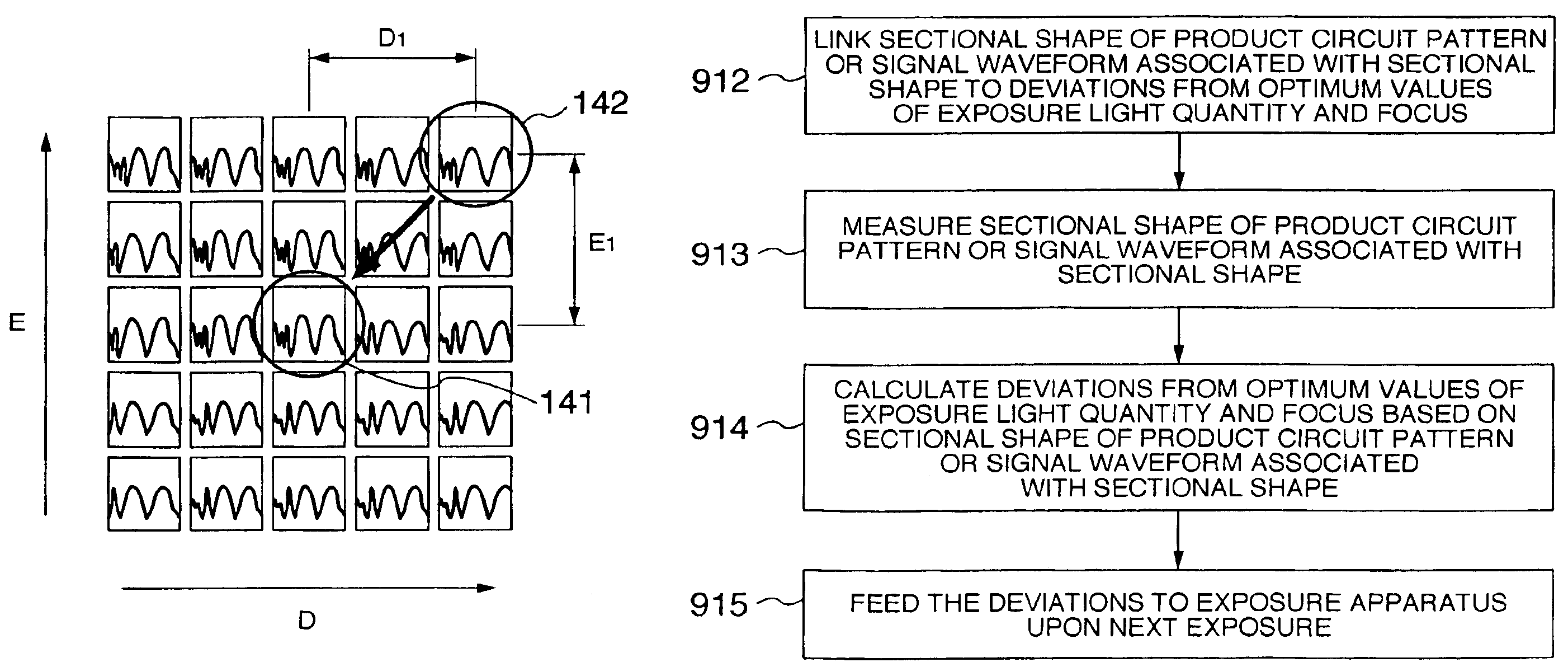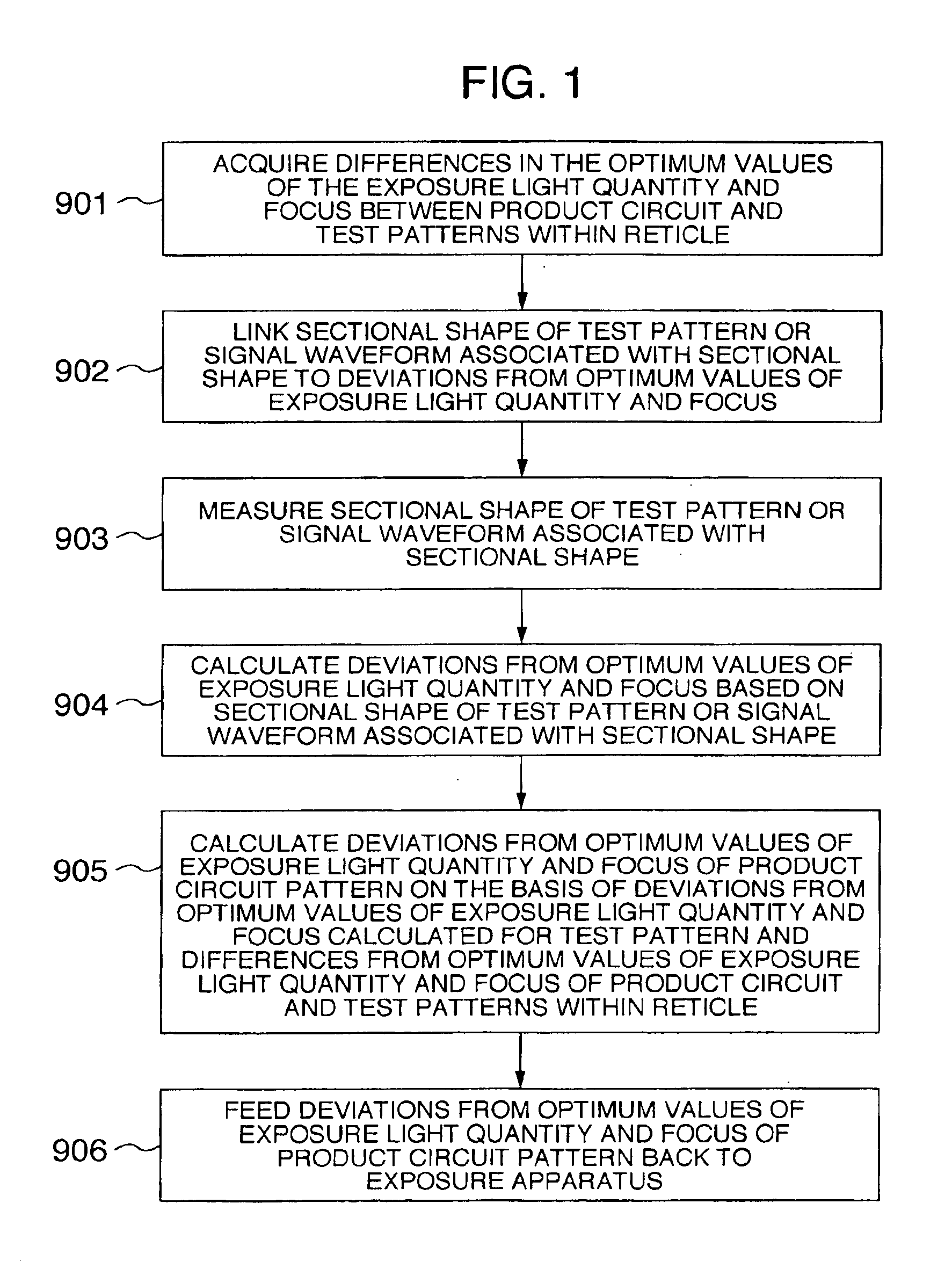Method and its apparatus for manufacturing semiconductor device
a semiconductor and manufacturing technology, applied in the direction of printers, instruments, camera focusing arrangement, etc., can solve the problems of not being able to monitor the quality of exposure light and focus using an actual product circuit pattern, so as to eliminate the need for evacuating operation, improve yield, and improve yield
- Summary
- Abstract
- Description
- Claims
- Application Information
AI Technical Summary
Benefits of technology
Problems solved by technology
Method used
Image
Examples
Embodiment Construction
Embodiments of the present invention will be detailed with reference to the attached drawings.
FIG. 1 is a flowchart showing an example of a method for manufacturing a semiconductor device as an embodiment of the present invention.
In a step 901, first of all, differences in the optimum values of the exposure light quantity and focus between a circuit pattern 51 and a test pattern 52 within a reticle 5 are previously acquired. For example, differences between the optimum values of the exposure light quantity and focus when a central dimension was specified within ±10% are given as a center offset of a process window as mentioned above. According to experimental one of methods for finding the differences, light exposure is carried out while the exposure light quantity and focus are varied to measure dimensions of transfer patterns of the circuit and test patterns 51 and 52, their process windows are plotted, and their center offsets are calculated. In this method, however, since the ex...
PUM
| Property | Measurement | Unit |
|---|---|---|
| reflection intensity | aaaaa | aaaaa |
| wavelength | aaaaa | aaaaa |
| incident angle | aaaaa | aaaaa |
Abstract
Description
Claims
Application Information
 Login to View More
Login to View More - R&D
- Intellectual Property
- Life Sciences
- Materials
- Tech Scout
- Unparalleled Data Quality
- Higher Quality Content
- 60% Fewer Hallucinations
Browse by: Latest US Patents, China's latest patents, Technical Efficacy Thesaurus, Application Domain, Technology Topic, Popular Technical Reports.
© 2025 PatSnap. All rights reserved.Legal|Privacy policy|Modern Slavery Act Transparency Statement|Sitemap|About US| Contact US: help@patsnap.com



